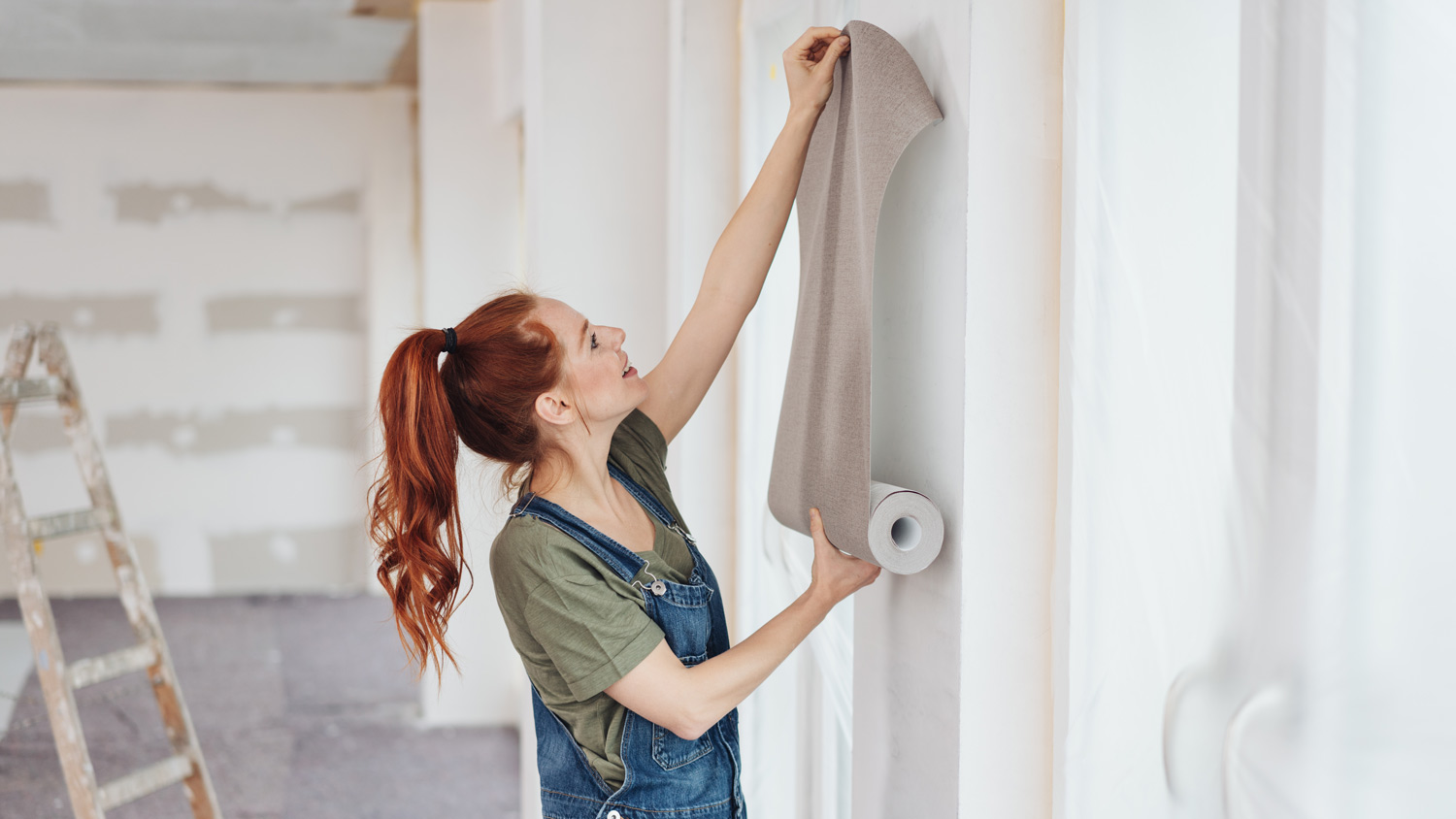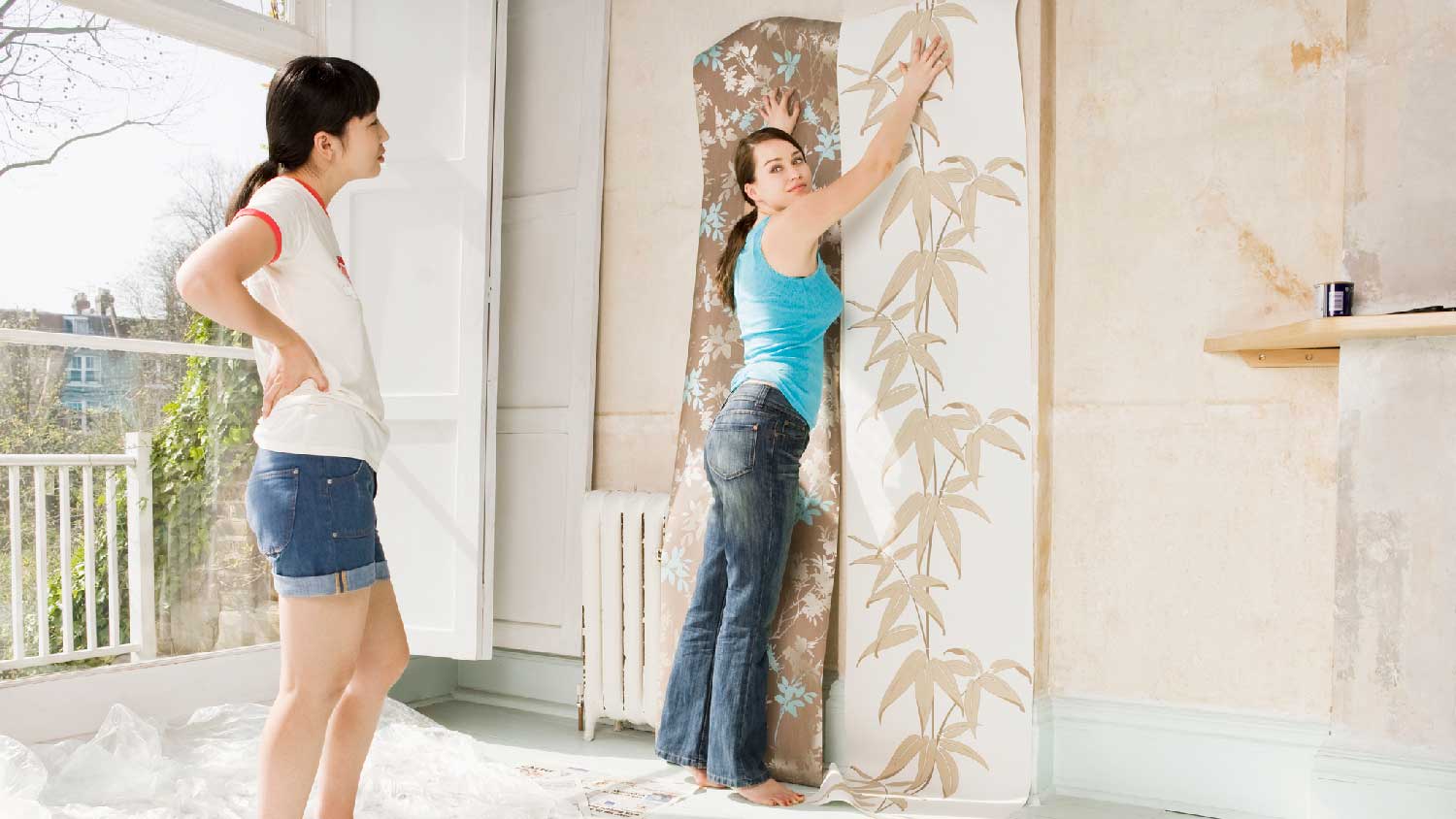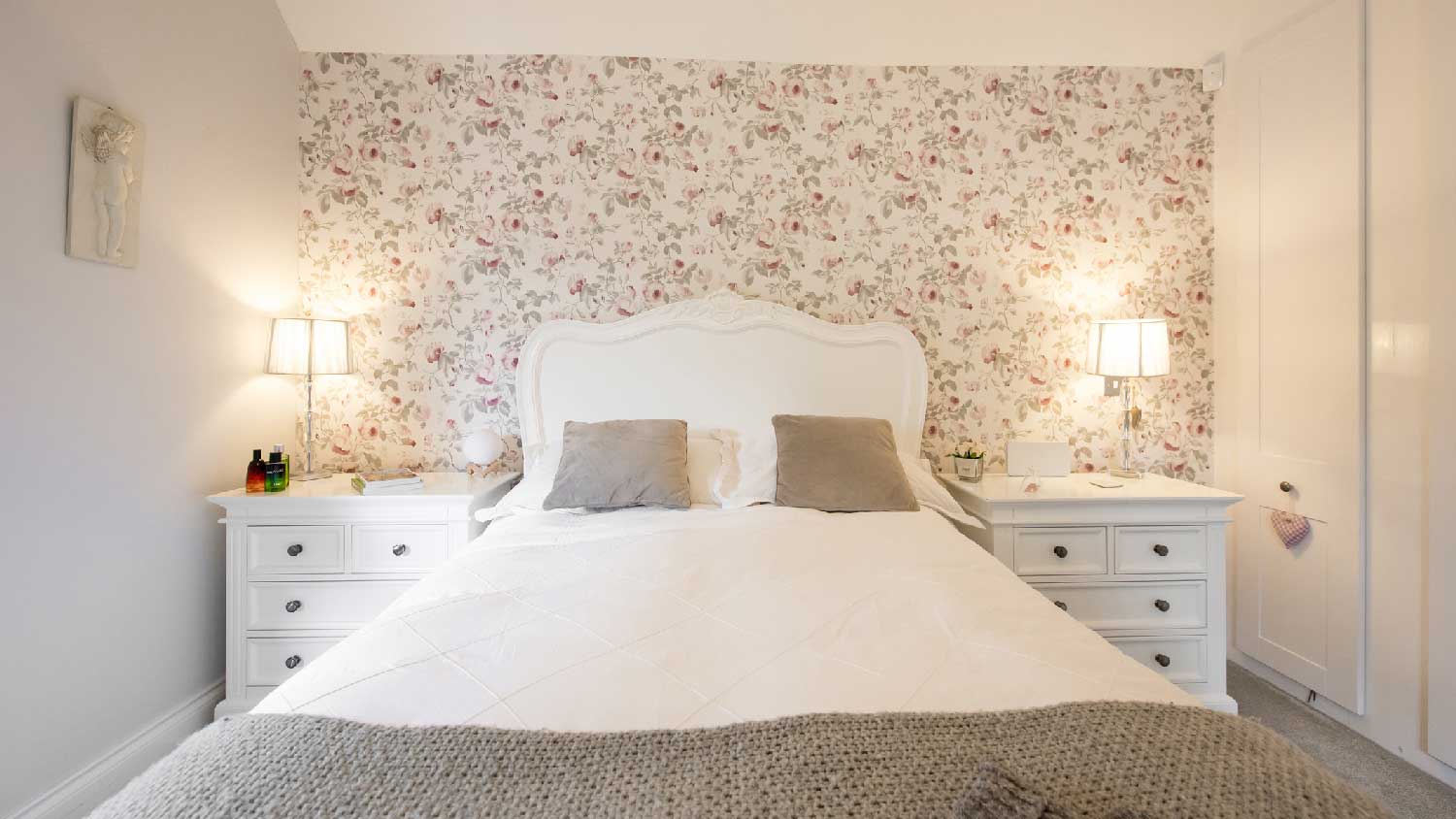
Discover wallpaper installation cost. Learn about material, labor, and project factors to estimate your budget and make informed choices for your home.
It depends, so inspect your walls carefully to avoid a sticky situation


Wallpaper requires a porous surface for proper adhesion, so you won’t be able to cover vinyl-coated wallpapers.
You should consider other factors like texture, condition, and color.
Avoid covering multiple wall covering layers with new wallpaper.
Wallpaper is back in style, but many outdated designs still need a refresh. To cover the old wallpaper in your home with a new pattern, you need to know about alternatives to the time-consuming, messy removal process. In some cases, wallpaper removal isn’t necessary. But whether or not you can put wallpaper over wallpaper depends on your specific situation. This guide will walk you through instances where you can or cannot take the easier route.
Whether or not it's a good idea to put wallpaper over wallpaper depends on several factors. Consider the following before you make a decision.
Wallpaper comes in multiple types, the main two being non-coated and vinyl-coated. In most cases, you can wallpaper over non-coated products, but the vinyl coating creates a non-porous surface that new wallpaper adhesive won't stick to. Instead, the adhesive may bubble up and ruin your installation.
If you don’t know whether your wallpaper is vinyl-coated or not, dampen a sponge with warm water and rub it on a small area. If the dampened area darkens, it's likely non-coated.
Cracked or peeling wallpaper shouldn't be covered, as these are signs of underlying moisture issues, mold, mildew, or other damage. You'll want to remove the existing paper completely to inspect the full surface and remedy problems before a new wall covering is applied.

If your existing wallpaper is embossed, embellished, or has any sort of raised texture, said texture will create visible bumps when you apply new wallpaper on top. Remove it before installing new paper to avoid a messy finish.
Even if your existing wallpaper is non-coated and in good shape, a particularly dark color or bold pattern may show through the new wallpaper. You can test this by purchasing and applying a small sample of your desired new wallpaper.
The more layers are beneath your wallpaper, the less effective its adhesion will be. We don't recommend wallpapering over more than one existing layer. You may have to remove or cut into a small section of your existing wallpaper to see how many layers are underneath.
Wallpaper installation is fairly straightforward, but layering wallpaper over wallpaper can have some complications. Improper prep can result in wallpaper that doesn't adhere properly, leaving you with a costly, bubbling, peeling mess in some instances.
To guarantee a problem-free project, contact a local wallpaper installation professional. A trained pro will use the correct adhesive and primers for the project and can remove existing wall coverings safely and efficiently if needed.
From average costs to expert advice, get all the answers you need to get your job done.

Discover wallpaper installation cost. Learn about material, labor, and project factors to estimate your budget and make informed choices for your home.

Can you put wallpaper on textured walls? You can, but you might not want to. If you do, here are some tips to stack the odds in your favor.

Prepping for a DIY wallpaper project? One of your first tasks is learning how to measure for wallpaper. Here's how to calculate how much wallpaper you’ll need.

Struggling to choose between wallpaper versus paint for your interior space? Learn how these options compare and which is best for your next project.

Using wallpaper primer will help ensure your wallpaper adheres to your wall. Learn why wallpaper primer is necessary for the best results.

Love the look of wallpaper, but not sure which type is best? Learn the differences between peel-and-stick versus traditional wallpaper in this guide.